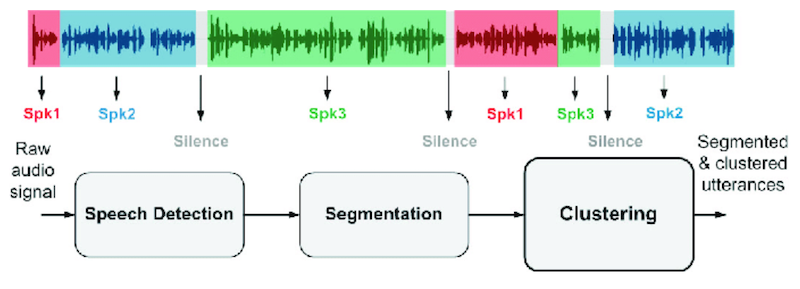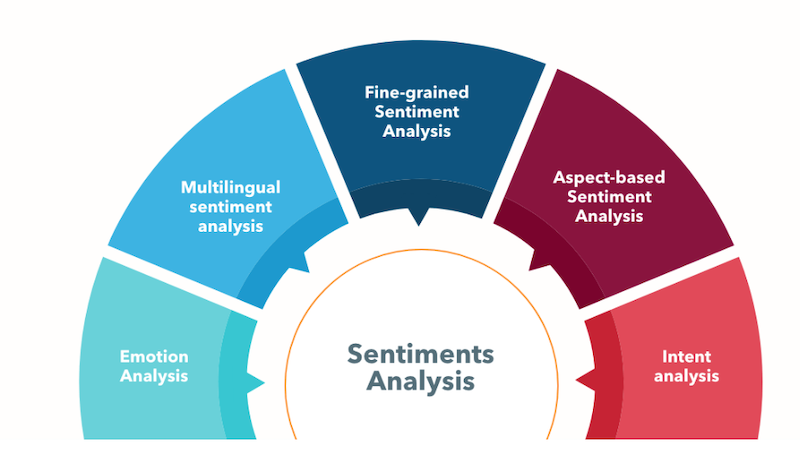11 Expectations in the Development of AI Transcription
Does the name Audrey Hepburn ring a bell?
Way back in 1952, it was the first computer speech recognition tool. Even though the technology was groundbreaking, the software could understand only digits.
Since then, transcription software has come a long way.
Today, transcription tools use immersive technologies like artificial intelligence (AI) to convert speech to text. Transcription tools can automatically record a conversation and convert that into text within a few minutes.
Besides detecting the right language, AI transcription software can automatically detect emotions, recognize multiple speakers and intent, and pull up actions and accents.

With breakthrough technology paving the way every day, the future of AI transcription seems bright. Companies can expect more groundbreaking innovations in the AI transcription world.
You can expect more astonishing results from AI transcription. But for now, it’s essential to understand some of the upcoming and in-practice development in this field.
In this article, we discuss some expectations for the development of AI transcription.
11 Expectations in the development of AI transcription
The future of AI transcription is bright because with each passing year, AI speech-to-text transcription is becoming more accurate and accessible. Here are a few things you can expect in AI transcription:
1. Ensure reduction in cost
Many companies rely on AI transcription tools for automatic video transcription to text. Often, these tools are expensive to use, and when completing a large project, this cost can significantly add a financial burden to your overhead costs.
With artificial intelligence becoming more sophisticated and with the advancement of technology, the cost associated with AI transcription is likely to reduce. Besides cost reduction, customers will probably receive AI transcription much faster and more accurately.
This primarily means customers don’t have to invest in manual transcription or get their automatic transcription proofread by a professional.
2. Improve functionality
With each additional step that AI-transcription takes, it is likely to bring truckloads of functionality.
With AI transcription advancement, customers will probably enjoy improved functionalities, features, and capabilities.
Some common functionality you’ll likely witness in the coming months is transcribing multiple files at once or choosing from various output formats.
3. Faster turnaround time for projects
AI transcription is likely to make the entire process quicker. With manual transcription taking more than a day to provide an accurate transcription, AI and machine learning can result in faster project turnaround times.
This might be useful during last-minute transcription. In the coming days, when a company uses automatic transcription software, they’re likely to get the transcription within a few hours.
As these tools do not rely on manual typing, they might provide quicker and more accurate results.
4. Ability to analyze sentiments
Today, companies leave no stones unturned in ensuring that AI transcription tools replace manual transcription. As a result, companies are training AI tools to extract sentiments in a person’s speech and analyze those feelings.
For instance, AI transcription tools can understand the sentiment between a customer-agent conversation in the retail or telecom industry.
Using the data obtained from the sentiment analysis, a company uses it for better agent training, customer interaction, and targeted marketing. This feature is likely to bring a revolution to the transcription industry.
5. Help in entity detection
Another critical functionality businesses and companies expect in AI transcription is entity detection. Typically, entity detection identifies and classifies entities in a text. For instance, arms and feet are body parts, whereas engineers are entities.
This entity detection functionality can be helpful in the medical industry. It can help to determine the patient’s condition and create a treatment plan based on their diagnosis.
This entity detection can help automatically sort patients and perform statistical analysis on patient records.
Most AI transcription software uses voice bots that help companies and businesses identify specific people or companies. It then automatically triggers actions based on personalized interactions.
6. Ensure speaker diarization
Another area where AI transcription is likely to bring a revolutionizing change is identifying distinct speakers in a video or audio call. Speech diarization technology will become helpful for call centers that can analyze speaker behavior to make future predictions.
For instance, when a customer is trying to transcribe a podcast, the AI transcription tool will label the speaker’s name to make transcriptions more readable and understandable.
7. Ability to detect safe and unsafe content
Often, in a quest to acquire more customers, businesses might end up transcribing content that contains hate speech, drugs, and violent content. This can put the company at the risk of facing legal issues.
Technological advancement allows companies to identify and filter content for potentially sensitive and harmful information.
Online podcast platforms and video content management companies can use content-safety detection for content moderation and ensure they don’t share illegal or hate speeches with their audience.
8. Ability to summarize
Another intuitive feature that companies and clients might find beneficial is the ability to summarize the file into logical chapters and generate a summary for each.
This notable feature helps transcribe and create summaries of virtual meetings. After each meeting, employees no longer have to transcribe the video or audio manually. Instead, they can use this software to create accurate summaries.
9. Ensure advanced intelligence
One of the most noteworthy features of AI transcription is the possibility of using it for more than just transcribing video or audio files.
With technology advancing rapidly, AI transcription can be helpful in various tasks, such as generating customer interaction data, summarizing videos and audio, and identifying key meeting points.
10. Difficult to distinguish between AI and human transcription
As AI technology continues to develop and improve, it will become a challenge to distinguish between manual and AI transcription.
This is primarily possible because of the refinement of machine learning algorithms.
The immersive technology will make it difficult for professionals to distinguish between manual and automatic transcription.
This is the most noteworthy and trustworthy aspect of the AI revolution.
11. Provide topic and intent analysis
AI transcription will provide and ensure topic and intent analysis. This primarily involves taking a transcript and identifying the topics being discussed.
Topic analysis is helpful where a business or a customer quickly gets an overview of the key discussion or meeting points. Intent analysis involves using a transcript and trying to understand the intent of the people speaking.
This feature is likely helpful in areas where you need to understand what someone is trying to say.
How accurate are AI-produced transcripts?
Today, an array of AI-produced transcription tools are available in the market. While some are free tools, others might use more complex technology that delivers greater accuracy, but at a high cost.
Most AI transcription tools boast accuracy above 88-90 percent, but the performance might be much higher than this. Software like Amberscript enables an accurate flow of audio-to-data that users can edit using an intuitive text editor. It boasts of high accuracy, making it a one-of-a-kind transcription tool.
Another tool providing high accuracy in AI transcription is Descript, which boasts of providing near-instant turnaround time and costs only a few pennies per minute.
Until AI leverages the above advancements, coupling the AI transcription tool with human editors can provide over 99% accuracy that higher education industries and legal firms heavily rely on.
Future of AI transcription
The modern life that we live in seems like a science fiction theory where machines completely take over humans. While the reality isn’t that grim, some digital assistants might give a sneak peek into the futuristic vision of the next Hollywood movie.
AI transcription tool is one such assistant that is revolutionizing every sector that requires transcribing services. These tools have the power to make meetings more productive and increase workplace efficiency, allowing businesses to spend more time on other productive work.
As AI and machine learning capabilities are likely to improve each year, these tools will bring a revolution. This immersive and intuitive technology will become more accurate, cost-efficient, and accessible in the coming years.
Technological advancements in AI transcription can revolutionize how customers and companies interact with machines.
If you’re a business looking to transcribe audio or video files, consider using a reliable AI transcription tool to increase the productivity of your employees while giving you time to focus more on your business.
Are you onboard the AI revolution?

Author’s bio: Priya Jain has been copywriting professionally for over eight years. She has attained an engineering degree and an MBA. She teaches math, spends her time running behind her toddler, and tries new recipes while she isn’t writing. You can find her on LinkedIn.
Main image credit: Armedia.com




